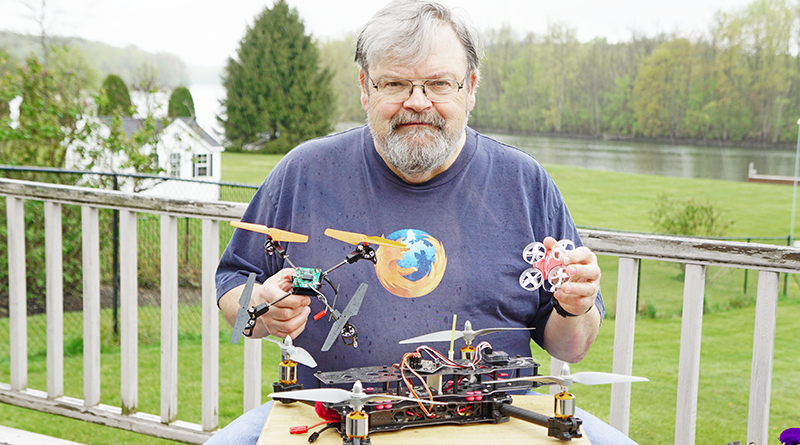Boomers’ New Trendy Toy: Drones
By Deborah Jeanne Sergeant
Commonly known as “drones,” unmanned aerial vehicles (UAVs) have become popular among baby boomers for both work and play. Now that they have the time to engage in more hobbies as retirees, those interested in radio-controlled aircraft can learn all about piloting a UAV.
Though all ages enjoy UAVs, they offer 55-plus people some highly desirable benefits.
Many 55-plus people buy UAVs for surveying their property, checking on their hunting sites or finding out if their home’s rain gutters are clear, among their many practical uses.
UAVs are becoming popular for business owners as well. Farmers, for example, use them for all sorts of reasons. Elson Shields, Cornell University entomologist speaking at New York Corn Congress last January, said UAVs can help farmers plan field drainage, monitor crops, identify plant stress, and time their harvest, as well as keep an eye on livestock, all without taking a step.
Garret Wikoff, treasurer of the Central New York Indoor Flying Society in Cicero, has been flying UAVs for 30 years. He recommends beginners to join a club.
“They can help you learn how to fly it,” he said. “Learning to fly a radio controlled aerial vehicle isn’t a simple thing.”
He also recommends joining the Academy of Model Aeronautics (www.modelaircraft.org). The organization includes insurance to members as part of the membership and, for those with aircraft over 8 oz., the federally mandated registration.
UAVs lighter than 250 grams do not require registration. For those 250 grams and over, the registration is $5 for three years.
“If you get on the AMA site, you’ll find a listing of most of the clubs in the area,” Wikoff said. “Then you’ll talk with people with experience who can get you through the initial problems. It appears very simple but it’s not.”
Newer, four-propeller helicopters are easier to fly, but cost more.
Read all instructions first and practice take-off and landing several times while in a wide open area. Don’t try any abrupt movements until you become accustomed to the controls. Turn the throttle down if you think you’ll crash because the craft will suffer less damage if the propellers aren’t turning upon impact with the ground.
Don’t fly a UAV near pets. Although UAVs look like toys, keep children away and never go near an operating UAV unless you are absolutely certain the propellers cannot engage, since their high speed can cause serious injuries.
Consider buying from an American source, since the instructions in an imported model may be difficult to understand or abrupt.
What to Buy
In the market for a UAV? The pricing varies widely. Entry-level hobbyist UAVs can cost less than $30. Commercial-grade UAVs cost up to $100,000. It’s all about size and features.
Smaller, lighter craft (some fit in the palm of the hand!) may not include a camera. Some UAVs may be suitable for flying indoors, which can offer beginners a chance to gain experience without fear of losing control and hurting someone else or damaging another’s property.
Most enthusiasts want a camera that shoots both still shots and video. Most models stream video to the pilot’s tablet or phone and allow live viewing, but all store the data for downloading later. Consider why you want to use a UAV for photography and videography. Choose from among professional quality video cameras, fisheye lens cameras, high resolution cameras and more.
Craft with longer ranges allow pilots to fly their UAVs for greater distances. Smaller UAVs usually offer shorter ranges.
Flying time represents another top feature UAV pilots desire. Although purchasing an extra battery can extend flying time, larger craft allow longer flying time than smaller craft.
For pilots who really love technology, programmability becomes a big priority. UAVs that are programmable allow pilots to better customize their experience.

